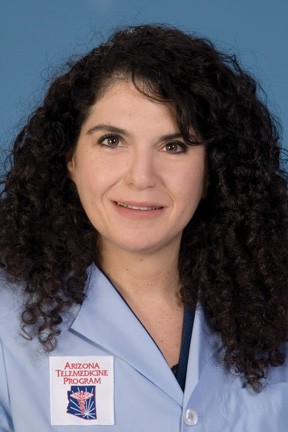Despite a recent amendment in Arizona law, a UA researcher must continue to wait for federal approval before conducting medical marijuana research.
Dr. Sue Sisley, assistant director of interprofessional education and assistant professor of internal medicine and psychiatry, was approved by the Food and Drug Administration two years ago to study the effect of cannabis on veterans who suffer from post traumatic stress disorder.
However, the FDA’s approval is one of many regulations Sisley will need to get through in order to move forward with the study.
Although Arizona voters approved the use of medical marijuana in 2010, an Arizona law was passed in 2012 that prohibited the possession and use of medical marijuana on college campuses.
After realizing the law didn’t make exceptions for marijuana research, UA administration urged the state to adopt a statute allowing such research on college campuses.
Last month, Senate Bill 1443 was signed as an exception to the law, allowing medical marijuana research to be conducted on college campuses. The research must also be approved by federal administrations including the National Institute on Drug Abuse and the U.S. Drug Enforcement Administration as well as the university’s Institutional Review Board.
Sisley is still waiting on approval from NIDA and the DEA before she can begin her study.
The drug must be purchased from NIDA after the study is approved based on regulations from the U.S. Department of Health and Human Services. The DHHS considers “factors including the scientific quality of the proposed study, the quality of the organization’s peer-review process and the objectives of the proposed research,”
according to an announcement the department released in 1999.
Sisley’s study would include 50 veterans, who would be separated
into a vaporizing group and a smoking group to study the different effects of each form of administration. An alcohol-based plant not containing THC — the main pyschoactive element in the cannabis plant — would be used as placebo. Sisley said she has heard many accounts of marijuana helping PTSD patients control their symptoms.
Medical marijuana research in Arizona is important because it answers questions people may have about what constitutes medical marijuana and what kinds of symptoms it can cure, Sisley said. A college campus is one of the safest and most secure environments to conduct such research while abiding by federal law and maintaining legitimate studies, she added.
“To put up barricades for research, like saying that it can’t be done at the university is really unhelpful to the progress of science,” Sisley said. “If you can’t do a marijuana study on campus, there really isn’t anywhere else for you to go … even though the U of A took the lead in trying to move the bill forward, the truth is that this is going to benefit all the
universities.”
Joseph Hatcher, a 32-year-old combat veteran, was 24 years old when he was deployed to Iraq. In 2006, the Department of Veterans Affairs diagnosed Hatcher with PTSD.
Hatcher was prescribed about six medications including anti-
depressants, muscle relaxants and mood stabilizers to treat his PTSD, lower back pain and insomnia. After seeing negative results from the medication, he decided to try marijuana instead.
“I spent a lot of years doing what the VA told me to and destroying my body and losing weight and I lost my family,” Hatcher said. “When I finally stabilized, it was cannabis that allowed me to focus and function without pain.”
PTSD is one of many health issues Sisley wants to study in regards to medical marijuana’s effects. Other intended studies include driving conditions after using marijuana as well as marijuana’s effects on chronic pain, severe appetite suppression due to the effects of chemotherapy, HIV, cancer and neurological impairments.
“We’re really eager to start answering questions that the community has [about medical marijuana],” Sisley said.
Leslie Tolbert, senior vice president for research at the UA, said it’s important for researchers to have the proper tools and a controlled environment to study drugs that could potentially help alleviate chronic pain and other disorders.
“We’re pleased that they [the state] were willing to do this,” Tolbert said. “All of us as researchers want to have the maximum number of tools available to us so that we can find answers to the questions we’re asking.”








